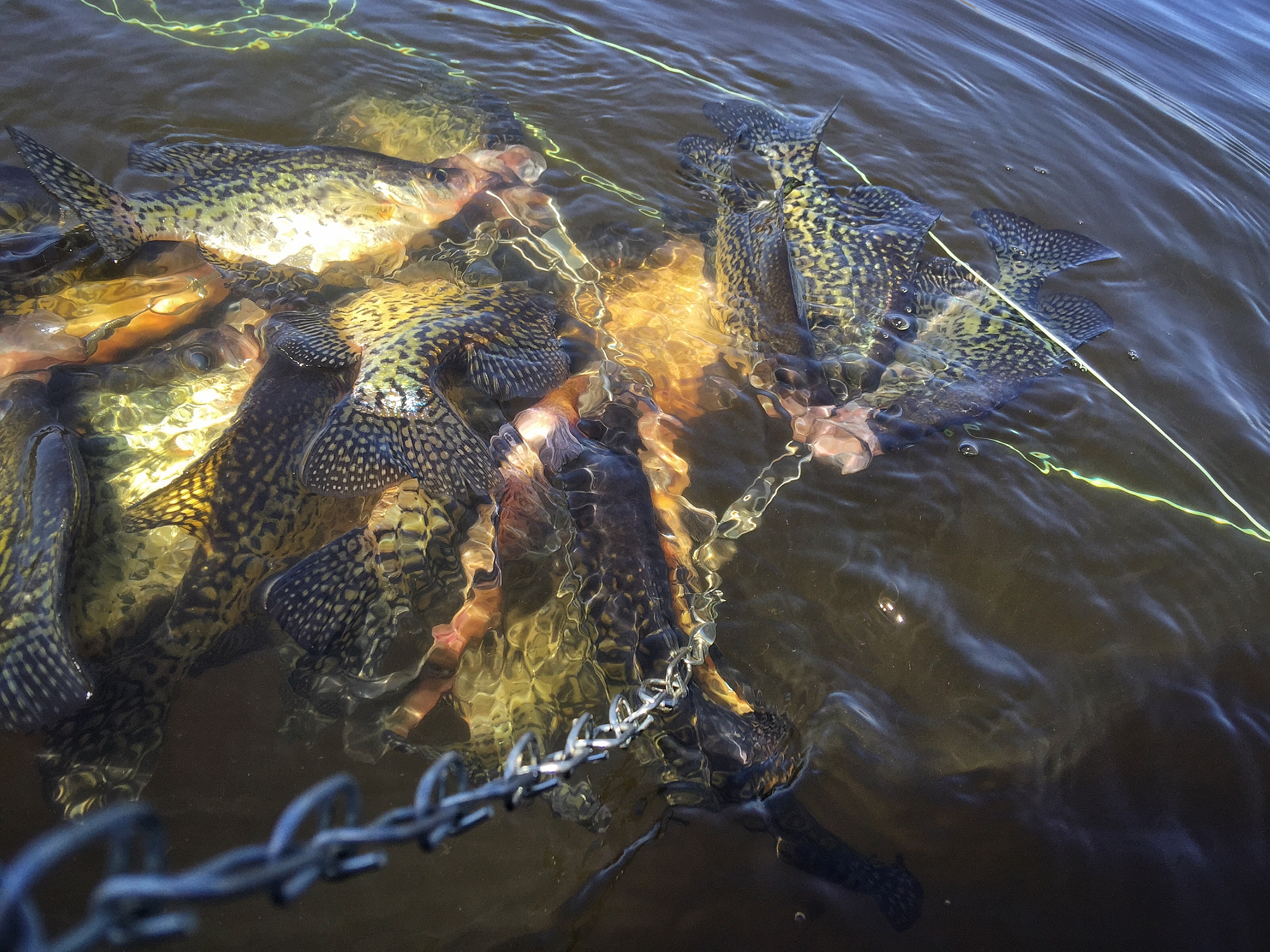Is your stringer lonely? Give it some good quality time with some crappie lips by trying out the following proven tactics that will string you out to the limit much faster than any of the other boats around:
- Going early doesn’t always translate to more fish. Remember, temperature is the driving force: crappies grow more active as the water temps increase. At this time of year, because the water is still below spawning temps, they’re more active as the day progresses; give the water some time to warm up by the sun. The only benefit to getting out there early means you can get to your honey hole to secure your spot before the masses come to pack it in.
- Instead of using a float/bobber try casting with a fly fishing strike indicator. Casting naturally covers more water than if you were to fish with a float/bobber, which typically remains mostly fixed in place. If you have a fly rod you may have the upper hand if they’re staging in 7 feet of water or less. If you don’t, give the following a try to mimic a fly fishing approach:
- Rig: Fix the strike indicator at the depth where you’d normally attach a float with a 1/32 or 1/16 oz. jig
- Retrieve: Upon the lure landing, pause, giving it a 3-5 second count and then quickly reel in 2-3 feet…repeat
- It’s a slow retrieve but adds enough movement for your lure to entice (remember, this is the pre-spawn…crappies typically aren’t overly active).
- Hook set: The strike indicator will sit low to the water surface, so any odd sights of it going slightly to the side or down means, more than likely, there’s a fish on. Set it when you see that type of action and adjust to give it more time if they haven’t quite swallowed your lure.
- Make small adjustments. Sometimes the difference in catching crappies is a matter of casting a few feet to the left or the right of the hot spot. Remember, crappies do move, but they’re not moving quickly out. If the spot that has been hot isn’t working for a minute or two, try casting your lure off to the side of it. Sometimes it comes down to depth, so drop your lure down or raise it up in increments. Make the tiny adjustments to find them again.
- Try flies for fly fishing. If you try the above, give this a shot (if you don’t have any flies, try out some 1/32 and 1/16 oz flu flu or marabou jigs). You may not be able to get your fly/lure out as far as a fly fishing rod, though. To add distance, put on your smallest split shot just below your strike indicator (that way it won’t sink your fly quickly). Your strike indicator may be submersed, but you should still be able to see it. As noted above, any change to how the strike indicator is normally floating means there’s a fish on.
- Live bait isn’t always the answer. Broaden your horizons. Instead of tossing crappie minnows, crawlers, or waxies tipped on bare hooks and jigs like every other boat around you is doing, expand your scope. As the days progress through the season, they only get smarter to what fishermen present. Try changing it up. Recently, on two separate lakes 60 miles apart, a baitless green-chartreuse 1/32 oz. flu flu jig (see below) outperformed all other rigs not only our boat, but also all the boats crowded around us. Sometimes less is more.


